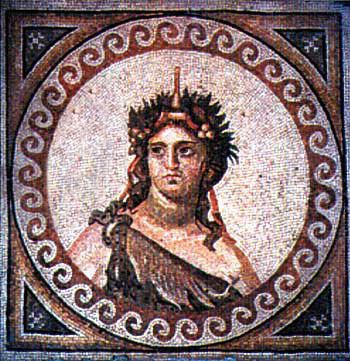Role Poet Name Nonnus Nonnus | Books Dionysiaca | |
 | ||
Deep Inside (Original Mix)
Dancing Tonight (Original Mix)
Nonnus of Panopolis (Greek: Νόννος ὁ Πανοπολίτης, Nónnos ho Panopolítēs) was a Greek epic poet of Hellenized Egypt of the Imperial Roman era. He was a native of Panopolis (Akhmim) in the Egyptian Thebaid and probably lived at the end of the 4th or in the 5th century AD. He is known as the composer of the Dionysiaca, an epic tale of the god Dionysus, and of the Metabole, a paraphrase of the Gospel of John. The epic Dionysiaca describes the life of Dionysus, his expedition to India, and his triumphant return to the west, it was written in Homeric dialect and in dactylic hexameter, and it consists of 48 books at 20,426 lines.
Contents
- Deep Inside Original Mix
- Dancing Tonight Original Mix
- Life
- The Dionysiaca
- The Paraphrase of John
- Works
- References
Life
There is almost no evidence for the life of Nonnus. It is known that he was a native of Panopolis (Akhmim) in Upper Egypt from his naming in manuscripts and the reference in epigram 9.198 of the Palatine Anthology. Scholars have generally dated him from the end of the 4th to the central years of the 5th century. He must have lived after the composition of Claudian's Greek Gigantomachy (i.e., after AD 394–397) as he appears to be familiar with that work. Agathias Scholasticus seems to have followed him, with a mid-6th-century reference to him as a "recent author".
He is sometimes conflated with St Nonnus from the hagiographies of St Pelagia and with Nonnus, the bishop of Edessa who attended the Council of Chalcedon, both of whom seem to have been roughly contemporary, but these associations are probably mistaken.
The Dionysiaca
Nonnus' principal work is the 48-book epic Dionysiaca, the longest surviving poem from antiquity. It has 20,426 lines composed in Homeric dialect and dactylic hexameters, the main subject of which is the life of Dionysus, his expedition to India, and his triumphant return to the west. The poem is thought to have been written in the early 5th century. The poem is traditionally regarded by scholars as being relatively mediocre in literary quality, but it still has value due to its preservation of many myths about Dionysus that otherwise may not have been preserved.
The Paraphrase of John
His Paraphrase of John (Metabolḕ toû katà Iōánnēn Euaggelíou) also survives. Its timing is a debated point: textual analysis seems to suggest that it preceded the Dionysiaca while some scholars feel it unlikely that a converted Christian would have gone on to devote so much work to the Dionysiaca’s pagan themes. A team of Italian scholars is currently producing a full commentary of the poem, book by book, of which several parts have already been published. They have shown that Nonnus was as learned in Christian theology (in particular he seems to have consulted the Commentary on the Gospel of John that Cyril of Alexandria had recently penned) as in pagan myth.
Works
A complete and updated bibliography of Nonnus scholarship may be found at Hellenistic Bibliography's page at Google Sites.
Editions and translations of the Dionysiaca include:
Editions and translations of the Paraphrase include:
A team of (mainly Italian) scholars are now re-editing the text, book by book, with ample introductions and notes. Published so far:
